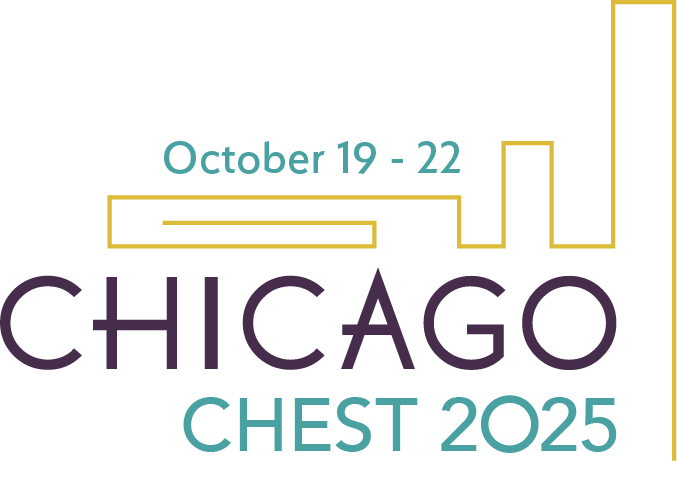
In many ways, the respiratory health community received a big win on June 9 when the Centers for Medicare & Medicaid Services (CMS) released long-awaited guidelines on coverage for noninvasive ventilation devices used by millions of Americans with chronic COPD.
This national coverage document (NCD), “Noninvasive Positive Pressure Ventilation (NIPPV) in the Home for the Treatment of Chronic Respiratory Failure consequent to COPD,” establishes Medicare coverage criteria for the use of two types of ventilation devices for patients with COPD. Additionally, it states that Medicare administrative contractors have authority to define coverage for the use of these devices “for all other patient indications not included” in the document.
Nicholas Hill, MD, who led a CHEST-initiated COPD technical expert group in submitting recommendations to the government, said he gave the new NCD a “thumbs up.”

“It gives a path for the use of ventilators that is not too restrictive and also enables use of either a BiPAP or ventilator, depending on the circumstances immediately following discharge, which was one of my big concerns,” Dr. Hill said.
Peter Gay, MD, FCCP, who wrote the executive summary for the policy recommendations from CHEST, said even the first-draft guidelines include almost everything that was recommended.1
However, Dr. Hill, Dr. Gay, and others familiar with the system also sounded a note of caution.
How the document guidelines and policies will be interpreted is an important and unknown factor, and one that could contribute to or hinder the goal of matching the right ventilation device to the right patient at the right time.
“The DME MACs need time to process,” Dr. Gay said, referring to the regional networks of private-sector durable medical equipment (DME) Medicare administrative contractors (MACs) responsible for processing Medicare Part A and Part B (A/B) medical claims.
COPD: Why it matters
The World Health Organization estimates that COPD is the fourth-leading cause of death worldwide—leading to 3.5 million deaths in 2021—and the global community’s eighth-leading cause of poor health, as measured by disability-adjusted life-years. Evidence suggests that a significant number of people across the globe live with undiagnosed COPD.2
In the United States, an estimated 30 million people are believed to suffer from COPD—though perhaps half of this number are not diagnosed, according to the COPD Foundation. Chronic lower respiratory diseases, including COPD, are the sixth-leading cause of death in the United States, according to a 2022 report by the Centers for Disease Control and Prevention.
COPD also leads to deterioration of lung function and is often accompanied by gas function abnormalities when obstruction becomes severe.3 According to a 2022 survey by Statista, approximately 47% of respondents who had been diagnosed with COPD in the United States said that the condition had negatively impacted their social life and relationships with friends.
CMS and noninvasive ventilation
Noninvasive ventilation devices are known to improve quality of life and reduce mortality for patients with COPD.4,5
Because these noninvasive ventilation devices—both bilevel positive airway pressure (BPAP) and continuous positive airway pressure (CPAP)—can cost anywhere from $500 to $4,000, and a home mechanical ventilator (HMV) can cost between $8,000 and $15,000, coverage under CMS DME guidelines can provide essential financial help for patients enrolled in these programs.
CPAP and BPAP devices often cannot supply the amount of volume that patients with COPD need. Plus, they lack portability, so patients cannot use them outside the home like they can with battery-operated noninvasive ventilation devices.
However, the prior guidelines sometimes made it easier to provide an expensive HMV for patients with COPD when a much less expensive BPAP-type device would have been sufficient. This greatly increased the cost of providing respiratory support to patients with COPD living at home. Furthermore, guidelines set by CMS often impact qualification criteria set by private insurers in determining—or denying—coverage for their clients.
In short, how CMS defines and determines the need for ventilation systems can affect how, for how long, and at what cost millions of Americans can breathe.
Three key points
Beginning in 2020, CHEST and allied respiratory health organizations convened panels of technical experts to recommend federal guidelines for noninvasive ventilation devices as they applied to distinct respiratory issues beyond COPD, including restrictive airway disorders, sleep apnea, and hypoventilation. These reports were submitted to CMS, which announced in late 2024 that it was creating a new document and accepting comments for revisions—but the document and revisions were to be only in relation to ventilation systems and COPD.
CHEST responded with a letter referring to the expert panel recommendations and outlining three key requests:
- Drop overnight oximetry saturation test requirements, which were proven to contain racial bias and had no proven medical basis.
- Focus on a comprehensive policy ensuring patient access to the correct device in a timely manner, which includes dropping a requirement to trial certain devices that a patient’s clinician knows are inadequate or not the correct match.
- Create a comprehensive and cohesive policy that is not interpreted differently by different entities—in particular, ensuring that the DME Medicare Administrative Contractors guidelines align with federal practices and language for respiratory assistance devices and HMVs.
The CMS guidelines accepted the recommendation to remove the nocturnal oximetry saturation test requirements, a decision that Dr. Gay had said he would welcome.
“It was absurd to begin with,” he said. “The justification for it didn’t exist in any research report, and they finally acknowledged that.”
The guidelines also dropped previous requirements to trial devices even if they were not recommended by a patient’s clinician. The new wording provides timelines for clinician follow-up evaluations for a patient’s use of either HMVs or respiratory assist devices (RADs).
The guideline draws distinctions between noninvasive ventilation devices, categorizing them as RADs or HMVs. It defines RADs as “[bi-level capability] devices that typically use a non-invasive interface (mask) to deliver a higher level of airway pressure when the patient inhales than when the patient exhales.” HMVs, according to the guideline’s definition, “typically have additional ventilatory modes, monitoring, ventilator control, and safety, alarm, and backup power features (batteries).”
This distinction seems designed to address a historic complication in providing patients with the correct device at the appropriate cost. Questionable regulatory interpretation in the 2010s resulted in patients being forced to use more expensive devices, thus needlessly ballooning Medicare expenditures. That cost override caused many to fear that HMV coverage might be removed entirely.
“We honestly thought that they would virtually block access to a home mechanical ventilator,” Dr. Gay said. “But, if anything, it will probably get easier to the extent that, now, it is clarified, and instead of people just being frightened of it and staying away from it, it’s now pretty clear that they expect you to have some need of that.”
A living document
The regulations for HMVs are a good example of how the impact of the document will be more than its final wording, Dr. Gay said.
“It will depend on how it is going to play out in the next couple of years, how DMEs respond, and what CMS sees as abuse down the road and then goes after it with additional language,” he said. “It’s always an evolving process.”
Dr. Hill agreed that the guidelines should be seen as a living document—one that is open to interpretation but could represent significant progress.
“I do think,” Dr. Hill said, “that this will probably make it easier to get the right device to the right patient.”
Editor’s Note: A version of this article was published in the Summer 2025 issue of CHEST Physician. This version has been updated to reflect new information.
References
1. Noninvasive Positive Pressure Ventilation (NIPPV) in the Home for the Treatment of Chronic Respiratory Failure consequent to COPD. Centers for Medicare & Medicaid Services. March 11, 2025. https://www.cms.gov/medicare-coverage-database/view/ncacal-decision-memo.aspx?proposed=Y&ncaid=315&fromTracking=Y&
2. Lamprecht B, Soriano JB, Studnicka M, et al. Determinants of underdiagnosis of COPD in national and international surveys. Chest. 2015;148(4):971-985. doi:10.1378/chest.14-2535
3. Celli BR, Wedzicha JA. Update on clinical aspects of chronic obstructive pulmonary disease. N Engl J Med. 2019;381(13):1257-1266. doi:10.1056/NEJMra1900500
4. Köhnlein T, Windisch W, Köhler D, et al. Non-invasive positive pressure ventilation for the treatment of severe stable chronic obstructive pulmonary disease: a prospective, multicentre, randomised, controlled clinical trial. Lancet Respir Med. 2014;2(9):698-705. doi:10.1016/S2213-2600(14)70153-5
5. Frazier WD, Murphy R, van Eijndhoven E. Non-invasive ventilation at home improves survival and decreases healthcare utilization in Medicare beneficiaries with chronic obstructive pulmonary disease with chronic respiratory failure. Respir Med. 2021;177:106291. doi:10.1016/j.rmed.2020.106291
